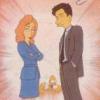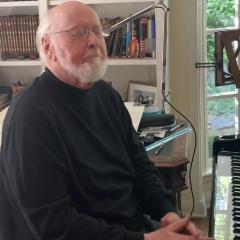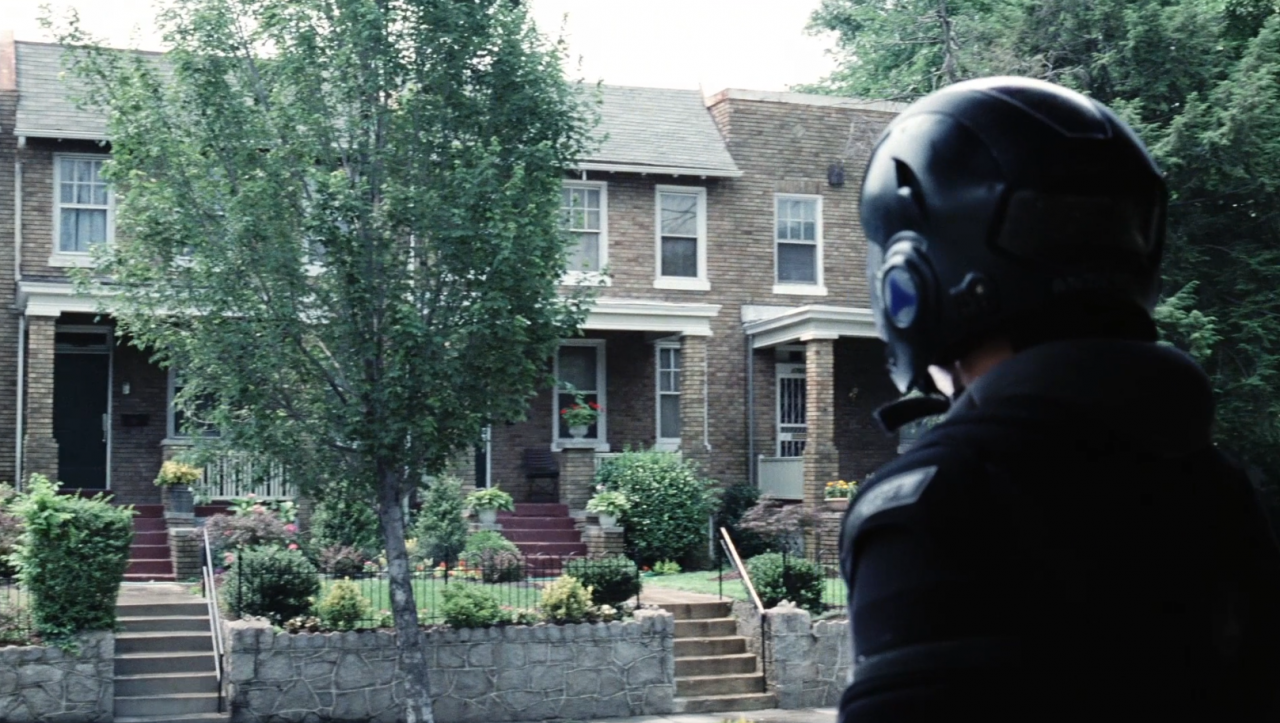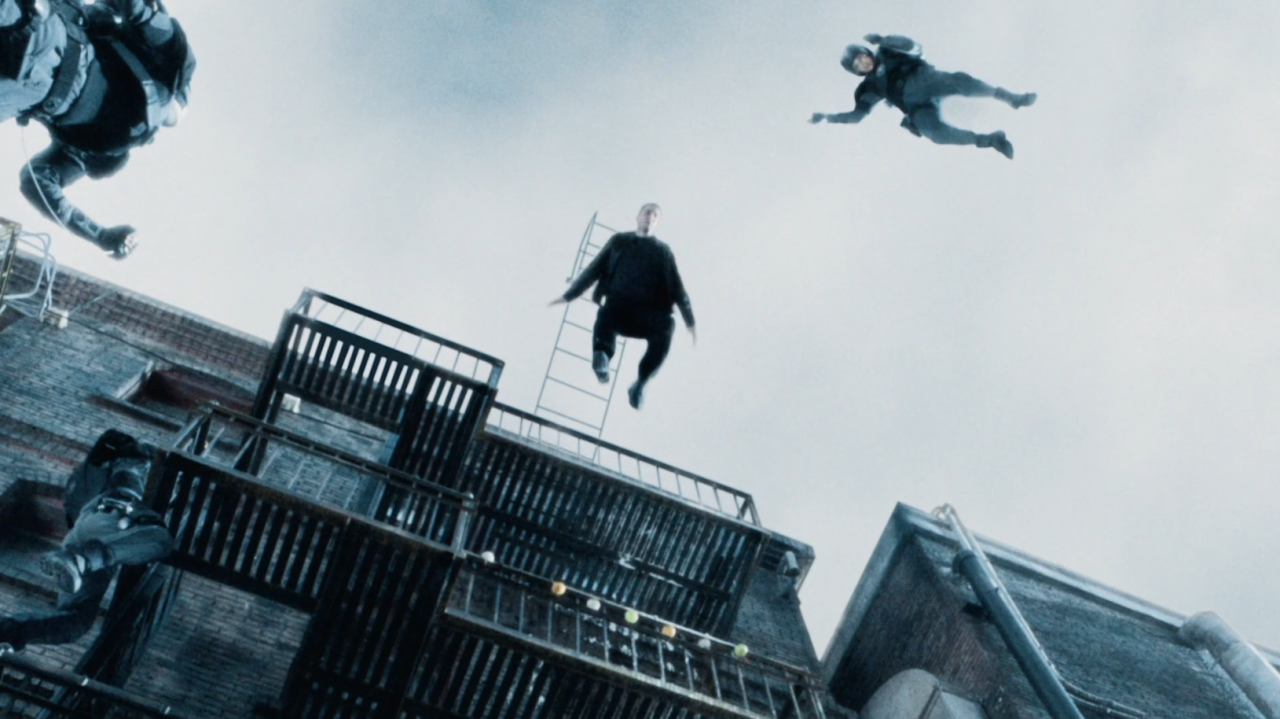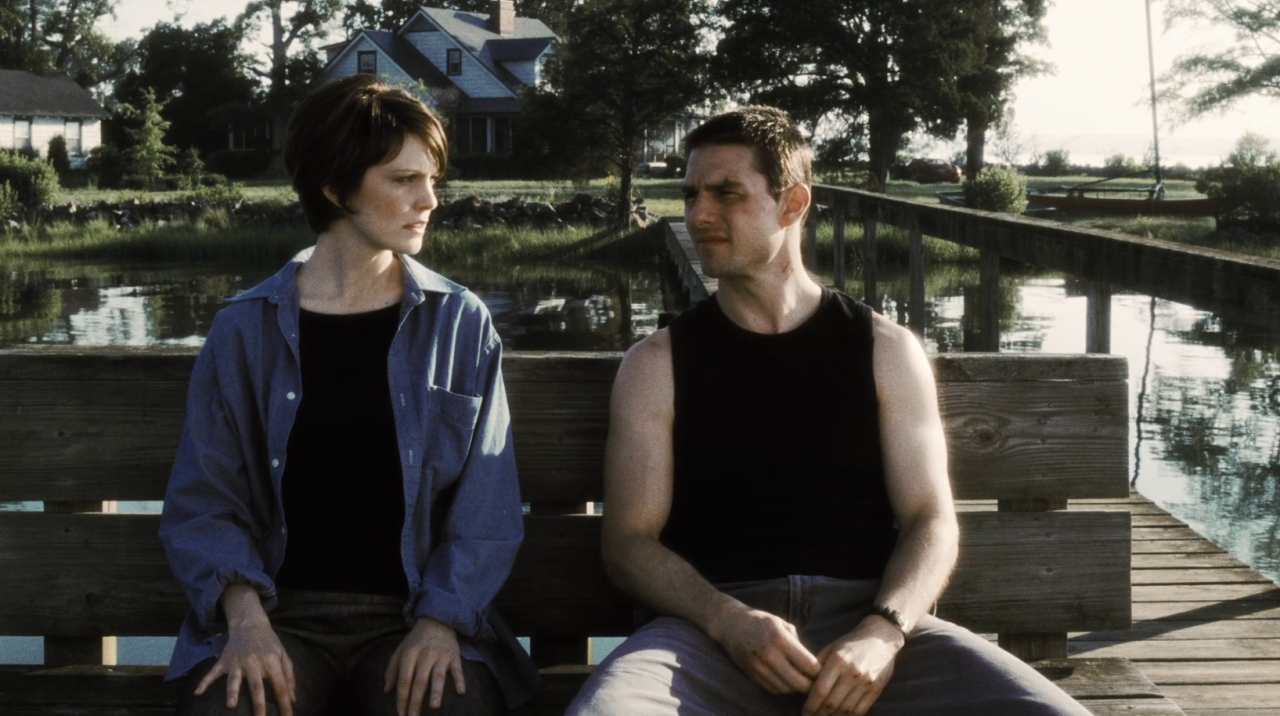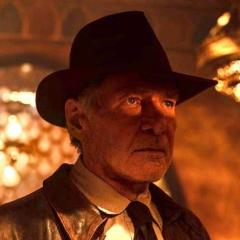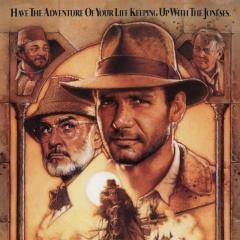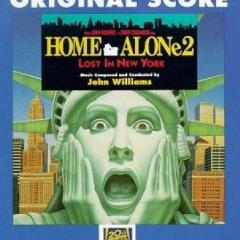Leaderboard
Popular Content
Showing content with the highest reputation on 27/06/21 in all areas
-
I hope he gets to finish writing it in good health. Karol5 points
-
Well, just when you think you pretty much know what there is to know about a score, sometimes you still stumble across something new. cc @Jay @Falstaft @Ludwig @crumbs @Datameister So, there was an "album score" of The Empire Strikes Back that appears to have been prepared by 20th Century Fox, I'm guessing as a keepsake for the people who worked on the score. It certainly was never offered for sale, but it does have the proper copyright info. It contains full scores for all the tracks on the album, with one omission: while it does contain 1M2 The Imperial Probe, it's lacking 6M3 This Is Not A Cave, which makes up the last minute or so of the first track. It also includes 1M2 New Start, 1M2 Insert Bar 80, and 1M2 Insert #2 Bar 109, none of which are heard on the album. I assumed this was just a simple mistake, until I recently looked closer and realized that there's indications of cuts not heard in the album track. The cut at 3:23 is going to sound very strange when you're not used to it, but it's exactly what's indicated. There's also a cut to something indicated at 4:13, but it's ambiguous. And I'm just guessing on that insert being used for the ending, but it seems to work well. So, here's my best attempt to reconstruct what was apparently the originally planned first track of the Empire Strikes Back album, 41 years later! https://drive.google.com/file/d/1fjE-uJcsKjVkA7ufh0TGvb_W12wgwv1s/view?usp=sharing4 points
-
I think the amount of references to the first score in COS could have been subtracted by like 25%. I do appreciate how much mileage he got out of Hedwig's Theme for motivic/thematic associations in both films, not even necessarily because of specific textual meaning which I think gets stretched a bit far by those who love analysis more than I, but just for its own sake it's delightful. A quote like "Wand of the Phoenix" for Hermione's petrification, though, is neither here nor there to me, and a straight rip like "Cornish Pixies" is just distracting. I think there's a very fine line between establishing a musical world and just recycling it and Chamber wobbles on that tightrope a handful of times. The Azkaban issue, I always just feel like there's no way to know how that score would have fit within eight HP scores by John Williams. The main thing is there's no Voldemort so I can't imagine JW wouldn't have brought his material back in 4. Plus things like Myrtle, and I'm sure we all hoped the Past theme would become part of the heart of the series alongside the family/friendship themes, instead of just the heart of one installment. It would just depend how he moved forward with his approach. Maybe he would have eventually landed on a revised Harry Potter voice by the end that merged some of those medieval colors in with those original themes and made it feel like less of an anomaly and more like a detour relevant to those first two. Or maybe it would have remained the weird one while 1-2 felt unified with 4-8. Or maybe we'd still be lamenting that he and the directors continued to forget all about the first scores. No idea.4 points
-

Harry Potter 7CD Collection - MUSIC discussion
Brando and 3 others reacted to Manakin Skywalker for a topic
Bill Ross is the key to all this, if we get Bill Ross working. Cause he's a funnier character than we've ever had in the movies.4 points -
Scores with best thematic/leitmotif handling ever (Minus LOTR and SW)
Holko and 3 others reacted to Marian Schedenig for a topic
More a case of talking past each other, I think. Because I don't think we're fundamentally disagreeing, except in that I don't see the point of strict dogmatic rules in this discussion, when the use of themes has so much of a grey area. I'd say the main difference between a "mere" idée fixe/reminiscence motif (I suppose they're basically the same) and a "proper" leitmotif is its use in narrative context. The idée fixes in Symphonie fantastique and Pictures at an Exhibition have clear narrative associations, but they mainly appear on their own (certainly in the Mussorgsky, where the theme is basically a glue between the (highly) individual movements representing the paintings; I just realised that it's been too long since I last heard the Berlioz to remember how he uses the theme). They also represent the only "overall" idea of each work, so even if they have programmatic meaning, they're narrative function is basically just a reminder of the overall setting or concept. Compare Williams' set piece themes, like the basket chase theme - that one is even quoted in ToD specifically as a reminiscence, but it's never used elsewhere and has no narrative function. Lohengrin's question theme has a much more specific narrative function. Just like the accompanying words, it is a very specific, and very emotionally precise device in the story. I don't know much about the conclusions and perhaps disagreements of Wagner scholars, but this one has at least at times been considered a leitmotif, as opposed to some other themes in the opera that have a clear narrative association but only appear once (to set the scene, basically) and never further the narrative on their own (which the question motif undoubtedly does) - see e.g. this brief article (in German). Then there's Strauss' Elektra, with the famous Agamemnon motif. A simple but very memorable motif that like Lohengrin's question motif is matched so closely to the text (A-ga-mem-non) that it's impossible for the listener not to grasp the association whenever it appears, and appear it does prominently, including at the very beginning and the very end of the whole work. Agamemnon himself never appears in the opera (he's been murdered before the action begins), only in Elektra's memory, but the theme clearly represents him "in physical absentia". It too has been called a leitmotif. Let's take a look at Star Wars. Certainly a leitmotific score. What about its main theme? Even in the first score it doubles as a Skywalker theme and the main theme. In the later scores, it's rarely tied directly to Luke, so its leitmotific use is comparatively rare. There's also set piece themes like the asteroid field music. In other words, plenty of themes that are not leitmotifs, but also plenty that are, coexisting in the same musical work. Lastly, Jurassic Park. It has two famous themes: The theme for the park and the Journey to the Island theme. Both make a major impact (and are clearly recognised by many people who otherwise have little interest in film music) because they're prominently feature in their main scenes, and play a crucial part in giving those scenes their emotional colour. Both show up at other points in the score, but with little narrative specificity - the island theme just serves as a little heroic fanfare, and while you could make a point that the park theme always represents the park, the film basically is the park, and the theme basically just does its duty as the main theme. But you also have the carnivore motif - and while that doesn't stand out to the average (non-)listener, it's the one theme that's clearly tied to the carnivorous dinos, and it's also a major building block of all the action and suspense score associated with those dinos. I'd say that one is clearly a leitmotif - in an otherwise thematic, but non-leitmotific score.4 points -
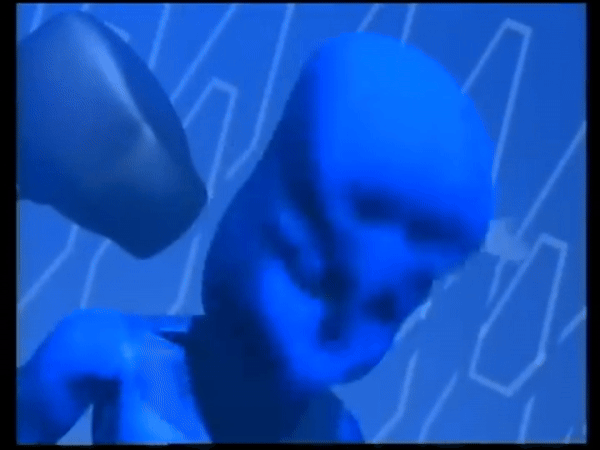
Harry Potter 7CD Collection - MUSIC discussion
Cerebral Cortex and 2 others reacted to mrbellamy for a topic
All the incidental stuff, I really didn't miss. But I think there would have been places for plenty over the course of the films like family, friendship, Voldy, Hogwarts, Myrtle, Fawkes, Dobby. The point being they didn't need to all be mushed into every movie but scattered throughout the films meaningfully with each score focusing on its own new identity primarily, it could have given a nice strong feeling of cohesive world-building. So that by the time "Leaving Hogwarts" shows up in 8 it's more than just that old cue out of the attic, it's been on the journey. That would have been the ideal for me and why it could get so frustrating every year because I was only ever looking for a few minutes' worth of the old shit. Obviously I understand Doyle, Hooper, Desplat had other negotiations to be concerned with in composing those scores, it was probably plenty enough for them in those months to make sure Hedwig's Theme was well represented along with everything else on their plate, but didn't make it less annoying when all you want is that extra inch. I also always just thought the "childish" thing was a dumb apology for losing the Williams stuff because yes, melodies are easily transformed and also the "dark" sequels are packed with silly comical magical music and sentimental themes anyway so... It's not really hard to imagine Williams' friendship theme plopped somewhere into this cue3 points -

What Is The Last Film You Watched? (Older Films)
Raiders of the SoundtrArk and 2 others reacted to Edmilson for a topic
Minority Report First time I watched this in years. It's a good movie with fine performances and a great score by Williams. However, Kaminski's cinematography is... weird. Almost every scene is lit with a blinding white bright. It's even worse than in War of the Worlds. I had to take some prints out of Netflix to clarify what I'm trying to say:3 points -

Soundtracks, Compilations, or other recently purchased Music
crocodile and 2 others reacted to GerateWohl for a topic
3 points -
3 points
-
Honestly, when it comes to JW sequel scores, I'll take a Chamber of Secrets over a Prisoner of Azkaban any day. Sure Prisoner of Azkaban is technically better, more inspired, and more original, but Chamber of Secrets at least feels like it belongs in the same musical landscape as the first film. Plus I'll take thematic development over technical achievement any day. I would have agreed and liked Prisoner of Azkaban better, if Williams hadn't dropped virtually every theme that had been developed in the first 2 films. The new themes are great and all, but the loss of the friendship, family, and Voldemort themes especially, really cripple a lot of my investment in that score. I also have to retroactively blame Williams, or the director for starting that trend in the Potter films of abandoning most of the pre-established material, which is partially what led to such emotionally devoid and mostly lame sequel scores. Plus there's a lot of inspired original material and development that is often ignored in Chamber. I love Williams cementing the Ron / Weasley theme, especially in "Letters from Hogwarts", there's a great new theme for the flying car, which also hosts several well-placed friendship theme reprises. The 3-note motif becomes more distinct and thoroughly developed (besides the temp-tracks which I admit are disappointing), which I always loved, since I always thought of that theme as representing Harry and Voldemort's rivalry more than anything anyway, especially considering its first appearance is when Harry gets his fortune left by his murdered parents, before the Stone is shown. Plus there's that wonderful allusion to the Hogwarts Forever theme when Gryffindor's sword appears. Yes the Attack of the Clones references are disappointing, but then there's little touches like the Wand of Phoenix theme being used when Hermione is petrified, subtly hinting at Voldemort being the culprit, or Gilderoy Lockhart's theme being a spin-off of Hedwig's / Magic theme, as a way of characterizing an arrogant wizard. Plus I love the one-off themes like Hermione's in "Hermione and The Mudbloods" (which has elements of the family theme), that are great set-ups to be used in future films. A lot of this might seems unimportant, but all of these details helped build the world of the series, as well as the sound of the music. Disregarding all of this for new and creative music, that only has a few tangential relations to the first films' music always rubbed me the wrong way. It's like if in Return of the Jedi, Williams or the director just said: "Ah fuck it. Let's just have a completely different sound to the music in this one, and only keep Luke's theme and the Rebellion theme." I know Double Trouble and Pettigrew's theme have ties to the Nimbus 2000 / Mischief theme, and that's great, but there's not much else in the score like this, that ties it into the last 2 films smoothly. I agree that it would have been nice to see the themes that got concert suites developed and used more often, but I do like the way they are developed already as well. I like that Dobby's theme is more subtle and unsettling in the score until his freedom where it gets a grander, and heartwarming treatment. Fawkes isn't in much of the movie so I think the more obvious, and straightforward uses make sense to make it more memorable. I also don't personally see the dislike of the use of Myrtle and Lockhart's themes. They were used in traditional Williams fashion in their relevant scenes, (Lockhart's theme doesn't really fit when he's being forced into the Chamber to me), and Myrtle's theme is especially well developed considering her low screen time. It even has a wonderful hybrid variation with Hedwig's theme in "Myrtle's Tale". I agree that the Chamber theme was used well, but I don't know if I think it should have been used with the Basilisk. Sure it would have been great to get the bombastic rendition heard in the suite, but I also like the idea that it's used as an ever looming threat of what could be, and when it's revealed that Voldemort is the cause, it's only Voldemort material used for the Chamber onwards. Yes, I count the temp tracking of "The Face of Voldemort" because the theme is still in the movie, and Voldemort therefore still has his original thematic material. I think if Williams had more time, he probably would have composed new variations of Voldemort's main 2 themes anyway for those scenes. Don't get me wrong, I love Prisoner of Azkaban's score, but I do think its originality is a detriment as much as it is a benefit. It keeps some elements of the sound of the first 2 scores, but the lack of retained themes, and building on what came before really makes it feel more like a black sheep that doesn't belong more than anything. A very smart, and a fine specimen of a black sheep, but a black sheep nonetheless. P.S. Apologies for the essay, I might have gone too far in a few places.2 points
-
EDIT: wrong thread, posted it here.2 points
-
The Old Indiana Jones Chronicles! Indy is doing some consultancy for a film studio where he happens to bump into Williams and a young Spielberg...2 points
-
The film's McGuffin will be the master tapes for Jane Eyre!2 points
-
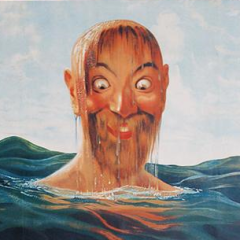
Harry Potter 7CD Collection - MUSIC discussion
Taikomochi and one other reacted to Holko for a topic
HP1 is so chock full of JW's magical inspiration and gives him a ton of opportunities with all the new things that are introduced - even the climax after a complex multitheme score with lots of standalone pieces sprinkled in and before the climax wraps all those motifs up perfectly, is a series of different trials with different moods so he can flex his solo instrument writing, weird, not exactly atonal aleatoric and athematic but definitely more modern feeling writing, etherial voices and a happy perky action cue, dark tones, a militaristic action setpiece and a heroic sacrifice. He loved the material so much and wanted to write much much more so much that it even overflowed into trailer cues and a whole damn Children's Suite. So it's weird that he feels a bit less inspired by HP2. Or rather, the movie itself doesn't give him as much space to be inspired - barely and HP1 material gets true meaningful development in it, and even when he introduces many lovely new motifs they don't get many appearances or development. Myrtle, the spiders, Dobby, Fawkes, Lockhart - only the Chamber theme really has space to grow and live, but even that's cut short by the reusage of the Three Note Loop in many places, and the frankly baffling lack of its usage in the Basilisk fight, you know, inside the Chamber the theme represents. That cue only being a great but generic 2000s JW action cue is one of the most disappointing aspects to me. So JW channeled 3 of these ideas into his concert pieces instead and holy moly! In my preferred order of the CoS Suite: Dobby the House Elf is filled with the little fanboy's nervous energy. As the piece goes on, the eventual unassuming cuteness develops into bigger and bigger, more and more severe chaos and loudness in both the bridges and theme statements with some probably intentionally offputting chords, perfectly illustrating his ever more paradoxically dangerous attempts to keep Harry safe, but never losing sight of the heart behind them. The Chamber of Secrets is the Basilisk fight that wasn't to be: while the score statements are mostly slowly creeping in, this more formal presentation of the A and B themes is energetically threatening right off the bat, though it still has space to grow from low introduction into bombastic action. And Fawkes the Phoenix, of course, allows the titular bird to finally soar freely (the bridges, while allowing it to climb higher and higher, still adding some kookiness to its character, being a magical bird who sets on fire and is reborn), something the score only permits for 1.5 of the 5 times it appears. And then Azkaban is just the embodiment of inspiration from start to finish.2 points -
As much as I'd like that, I don't think it will happen. Not even the Star Wars Sequels had 2CD releases. I think the best we can hope is for Mangold to fall in love with Williams' music as much as Rian Johnson did and then release an isolated score version of the movie, out of which bootlegs can be created.2 points
-
I nearly commented on that in the other thread when it was announced. Funny enough, you could argue that the Beethoven piece is the "popular", "easy" piece in that programme, because it was commissioned for the inauguration of Vienna's Theater in der Josefstadt. In that regard, it has much in common with Williams concert fanfares, although the Beethoven piece is more of a processional and not an actual fanfare (but it is technically march, and it does contain a fanfare). And I don't mean to imply that this is planned as a slight - I don't think Beethoven's piece would be lumped in the same (unfair) category as Williams "pops" fanfares. In any case, it's definitely a cool programme.2 points
-
An end credits suite at the same level as KOTCS2 points
-
2 CD full score!2 points
-
Discuss! Personally, I'm hopeful Williams will write a reflective "farewell to adventure" type theme to wrap up the series (assuming it's one of the themes Mangold explores in the film, considering it's Indy's last adventure).1 point
-

Harry Potter 7CD Collection - MUSIC discussion
Brundlefly reacted to bollemanneke for a topic
I love the wand theme reprise in Petrified Hermione. It works, doesn't have to be thematically logical at all. If you overthink themes too much, you get The Hobbit.1 point -
I don't know. Potter Scoring Project is doing a pretty good job of it. Plus he could always do what he did with The Force theme in Revenge of the Sith and distort the themes in different situations. Hell if you really think some of the themes wouldn't work in the form they're in now, he could always turn them into a minor key.1 point
-
Much better for the eyes, though the sky is still unusually white and bright.1 point
-
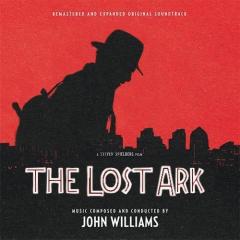
What Is The Last Film You Watched? (Older Films)
SteveMc reacted to Raiders of the SoundtrArk for a topic
1 point -
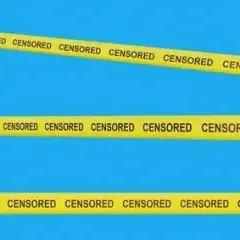
What is your number one wish for JW's Indiana Jones 5 score?
Brando reacted to Jurassic Shark for a topic
Perhaps Indy will have a brief encounter with JW.1 point -

Harry Potter 7CD Collection - MUSIC discussion
Once reacted to bollemanneke for a topic
Isn't 2 just a little unfocused because of his lack of time?1 point -
Alien people and others: if every movie in the franchise was scored by a different composer, why is the one to score the first automatically branded the franchise composer when they're all on equal footing? Maybe if they all quoted material from the first score and built on it... but they don't.1 point
-
What is your number one wish for JW's Indiana Jones 5 score?
Brando reacted to Marian Schedenig for a topic
Naturally, because the film was an Indy film.1 point -

LOKI - show and score SPOILERS ALLOWED for aired episodes
Yavar Moradi reacted to Edmilson for a topic
1 point -
Something as great as last Crusade. I also second a wish for at LEAST a 2CD release for Williams (and Harrison’s) final go. ….But that’s very wishful thinking.1 point
-
I hope for less whimsy, hopefully nothing that sounds like a parody or pastiche of past Indy scores, and some compelling new themes. Tintin was an Indy score in a way.1 point
-
I really hope the Indy V score mimics The Last Crusade in terms of globe trotting and emotion. I also want statements of the Raiders March similar to 'Indy's Home' from Raiders and the lovely statement of the B theme in 'Sinister Visitors' from Crusade. Assuming the story calls for it, but with Indy's age, I'm not sure why it wouldn't. The softer moments do more for me and the character than the big moments at times. Although I'd love for full on brilliant Indy fanfares when the time is right. KOTCS lacked those sentimental moments that The Raiders March can provide. Some new trek music would be great. I'm leaving out the obvious (sidekicks, villains and artifact themes) because I think those will be good.1 point
-
I had the extremely bright idea of making a weekend double feature from Mulholland Dr. and Images. Now I'm not even sure if I'm real anymore but I had a hell of a time.1 point
-
.thumb.gif.df2a851b259fbffe34b18fc1c796422a.gif)
What is your number one wish for JW's Indiana Jones 5 score?
crumbs reacted to Cerebral Cortex for a topic
I'm with you, Crumbs. Some theme that plays into a more grandiose reflection on a farewell to adventure, one's place in history, or perhaps the passage of time in general would be most welcome. A couple days ago I came across this very soft piano rendition of the Raiders March: At first I kinda cracked up just because of how overtly subdued it was, but, honestly, I really kinda like it. If we had to close the movie on a soft piano rendition of the theme, in contrast to how all the other films have ended, perhaps on a shot of Indy in a museum of things he has uncovered over the years that slowly fades to modern day with huge crowds of people looking at those same artifacts, I wouldn't be disappointed. What I'm ultimately speaking to is an overall hope that ideally I don't want Williams to feel boxed into having to do another big and brassy score for the film, at least not all the time. I think the ST scores strike a really good balance of providing moments of large orchestral splendor alongside quieter, more "thoughful" moments, something I found to be lacking in Indy 4 and that I would love for Williams to bring to this fifth installment.1 point -
Number 1 wish: something as good as Rise of Skywalker (at least one good new theme, great new statements of old themes, a few good action cues, some old fashioned strings à la Join Me, something elegiac à la Farewell...) Number 2 wish: another oscar. It's about time. Nearly 30 years after Schindler's List.1 point
-

The John Barry Thread
publicist reacted to Tom Guernsey for a topic
If only because someone posted some rather cool alternative cover art here or at FSM (apologies, I can't recall which or who it was) but I gave The Cotton Club a listen and, as noted, there is very little Barry score on the album - indeed if you have it on a compilation, that's probably all you need if you're just after his music. Having said that, I actually enjoyed the jazz standards. Does anyone know how much score is in the film? I always thought of it was a relatively well known Barry score but perhaps that's just because the theme appears on compilations. Surprised nobody has looked to release more... unless there isn't more to release?!1 point -
I'm still bitter that he wasn't approached for any more M:I films. I'm arguably even more gutted about this than the fact we haven't had a David Arnold Bond score for 13 years. And with their current equivalents being Balfe and Zimmer...filmmakers really are scraping the bottom of the barrel.1 point
-
How to Train Your Dragon trilogy.1 point
-
The 4k presentations of Temple of Doom, LC and Skulls are beautiful representations of the films. Skulls was much more fun than I remembered. But of the three follow-ups to Raiders Temple fairs best. The score is transcendent. It is so much better than LC or Skulls. It was practically perfect. ToD is the ultimate Indiana Jones films. Its insane. The complaints about the film are among the most stupid. Willie is annoying.So What? If Willy were more like Marion then the complainers would have bitched about that. At least it wasn't another Corny nazi reboot. The opening is without a doubt one of Spielberg's greatest opening of all his films. It has the most emotional ending of all 4 Indy films. The score is grand even epic. Ive said many times it's one of SS's most beautifully shot films. It is easily my favorite Indiana Jones films. I do like them all. While LC and Skulls are much lesser films with weak and weaker stories and impotent villains they have wonderful character moments that shine.1 point
-
August 9. They will give important information about the sale the week before, or at least that's what they told me. I have a hard time believing they will fill up both the 14th and the 15th concerts just with subscription sales. I'm sure there will be plenty of seats available on Aug 9.1 point
-
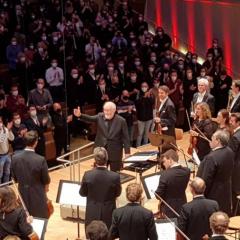
John Williams & Berliner Philharmoniker 14th/15th/16th Oct 2021
Canyoubay Liever reacted to Steve for a topic
So you can't afford 98€ to see one of your favourite composers conducting a world class orchestra? Maybe we should donate 1 € each for you1 point -
I just commented on this a few minutes ago in the other thread. I didn't have the heart to make a new thread about it. I'm surprised...I figured you'd be thrilled! Anyway, so much for TORN's reporting that Amazon owns all things Tolkien now, given that this has nothing to do with the Prime series. Should be interesting to see how they spin this.1 point
-
So, I did a little thematic breakdown writeup. It was not the easiest I ever did - I counted 15 (yes, 15 (yes, fifteen)) themes/recurring things, some of them some might classify as parts of one thing, some of them opening on the same note, some sharing a phrase, almost all of them only partially played multiple times but almost always in different guises, Powell riffs on themes and adds or subtracts notes. Therefore, if anyone notices any discrepancies, stuff I missed or got wrong, feel free to point it out, or add stuff if you have input to add! Theme: number of appearances, preferably clean complete statement timestamp description Big ones: Night Fury (Friendship arpeggio): 31, Forbidden Friendship (D1T12) 2:19-2:26 A descending melody later used as an ostinato. Friendship : 17, Where's Hiccup (D2T7) 1:19-1:43 A rising melody, AA', sometimes followed by BB' which is close to A and A' but higher pitched, climbing toward... Flying: 13, Coming Back Around (D2T8) 1:34-1:55 Soaring melody climbing up and down, AA'BC. Winds of Change (Hiccup): 10, The Vikings Have Their Tea (D2T10) 0:00-0:24 A gentle kind-hearted theme, ABA'C Viking Fun (Berk): 10, This Is Berk (D1T2) 1:12-1:20 An almost shanty-like energetic theme, 4 phrases, ABA'C. Viking Heroism: 14, This Is Berk (D1T2) 5:19-5:34 As the name says, a heroic theme for the Vikings, climbing up. Viking Warrior: 14, Ready/Confront (D2T2) 0:06-0:27 A more gritty action theme than the previous one. Viking Warrior 2 (Stoick): 3, The Vikings Have Their Tea alternate (D2T11) 0:49-1:24(?) A grim and stout one, AA'BBCD+, doesn't play enough time to truly tell what's still part of it, where it ends. Interestingly, its A is Winds of Change(Hiccup)'s A with a descending end rather than ascending and less decorated. Dragons: 18, This Is Berk (D1T2) 4:21-4:50 A drawn-out serpentine melody often returning to phrases and slowly climbing higher. Love theme: 6, Romantic Flight (D1T22) 0:20-0:48 Classic love theme. Smaller ones: Fate: 6, Training Out There (D1T5) 1:04-1:31 Descending, "Jewish" melody as the booklet says. Jig: 3, See You Tomorrow (D1T16) 0:18-0:26 Like the name says, a lively dance melody. Falling: 2, Test Drive (D1T17) 1:31-1:53 Exciting utility theme to add to the Flying repertoire in time of need. Fighting Dragons: 5, Over / Less Okay (D2T4) 2:39-2:41 Rythmic descending figure, mostly as an ostinato. Friendly Dragons: 4, New Tail (D1T13) 0:53-1:04 A small gentle figure. So, let's go through the Varese set! 1m2alt This Is Berk (film version) - The story begins with a mood not unlike Shrek's Fairytale. Noble brass opens with Friendship (first two phrases, then a single climbing one fading away), then a swinging lullaby bassoon Viking Fun over fitting percussion rythm supported by humming female choir and high strings brings us to a similar solo string and woodwind Flying. 1m2 This Is Berk (original) - A much more bombastic introduction featuring a slow reading of Viking Heroism, then continuing with a similar but faster paced Viking Fun then Flying combination as the other version. 1m3-4 ??? - A snappy string 1-2-1234 rythm (not dissimilar to the structure of Viking Heroism) leads into a multilayered buildup that erupts in a grand Viking Fun. Viking Warrior comes in after 2 of them and then another Viking Fun follows. Male choir and brass take Viking Warrior 2, then Fun returns again. Another statement, this time on quieter winds gives space to Heroism, an interlude, then Viking Warrior comes back in full force on brass then male choir, when suddenly the Love theme enters to change the atmosphere. After that, the following is a lot calmer too, Winds of Change on clarinet with busy sawing strings and a more heroic statement that quickly fizzes out into nonthematic material and one more fanfaric Heroism. 1m5 Dragon Battle - Snarling brass leads to our first introduction to two threatening Dragons statements until Viking Heroism overtakes it, but Dragons comes right back in in a strangely heroic setting. 1m6 Anybody See That? - Anticipatory textures and a not quite resolving chord open, then a comic joyous Winds of Change as Hiccup celebrates his lucky shot, but then Viking Warrior as the dragon chases him and Viking Fun finishes as Stoick steps in to finish the dragon off. So, between the two versions, the opening setpiece introduces... 9 of the 15 themes. Not bad! 1m7a War Room - Solo brass playing a fragment of Viking Warrior leads to Hiccup's clarinet and a flute opening up a militaristic but slow Warrior setting with percussion and male hummers. 1m7b Training Out There - As Hiccup wanders the forest looking for his "kill", we get our first Night Fury on harp, then Viking Warrior first on his clarinet and then a comically mock-heroic brass and male hummers one lead to a bassoon Winds of Change and an oboe and clarinet Fate, illustrating his true personality. After some stingers, anticipatory held notes and chords reminiscent of that in Anybody See That?, strings take up a rythm and brass plays Viking Heroism as Hiccup plans to strike down the trapped dragon, but the conclusion only leads to a loud miserable string Night Fury, and a low brass Friendship to play it off, as the seed of their relationship is planted here. After the dragon is freed and he threatens the boy but leaves him instead of killing him, we get a hardanger Night Fury with electric guitar. 2m8 Hiccup Comes Home - An uneasy and uncharacteristically fast Dragons reading. 2m9 Dragon Training - Opening with a slow reverent Viking Heroism not unlike the original opening, there follows a unique introduction and action bit with pieces of many melodies, until Heroism, including the first appearance of its ending, and eventually Dragons weave their way into it. 2m10 Wounded - Sliding strings and female choir play a curious Friendship. A second statement as Hiccup disovers he caused the dragon to be disabled is interrupted, then it restarts in a different mood with brass and male hummers. 2m11 Dragon Book follows with more of the string and hummer Friendship, but marimba and sawing strings start a rythm that eventually takes over with Dragons as Hiccup looks through the book at the many different species, Night Fury on the dulcimer (?) noting the last, empty page on the breed. As the scene changes to the Viking fleet, we get a hardanger Viking Warrior then unique dark percussive material. 2m12 Hiccup Focus - Right off the bat we jump into an action Dragons over an ostinato of Fighting Dragons, strings playing a not very heroic Viking Warrior before the action temporarily stops. A muted Heroism fanfare (starting a couple notes in) leads to a string Warrior and then a more heroic brass Heroism fanfare and a descending phrase. The action grows more frantic, the ostinato keeping Fighting Dragons' rythm but losing the melody. 2m13 Offering - A glassy Friendship just barely sneaks in between glassy textures as Hiccup sneaks back to the Night Fury to get to know him better, ending up naming him Toothless. 2m14 Forbidden Friendship - As the booklet says, a huge array of uncommon glassy instruments layer, play rythms, and eventually the Night Fury motif starts being passed back and forth between them, growing more and more in the process as the two leads grow closer together. It's through this cue that the motif that until now has only had lone appearances will become the driving repeating arpeggio heralding and supporting the strongest Friendship and Flying appearances. Only a sopilka solo playing a part of the Flying theme interrupts the monothematic nature of the cue. 2m15 New Tail - After a hardanger intro, Fate picks up on woodwinds then the entire orchestra as Hiccup builds the prototype mechanical tail. A calm setting of Friendly Dragons follows, then eventually a rythm picks up and Viking Fun plays on flute and then the whole orchestra as Toothless realises he's whole and can fly again - but not without his friend. 3m16 Teamwork - Fighting Dragons moving back and forth between instrument groups, then a slow Dragons spreads on strings as the smoke envelops the kids. 3m17 Charming the Pziiffelback - A return of Friendly Dragons as Hiccup peacefully defeats the beast. 3m18 See You Tomorrow - A cue-unique motif on winds and strings sets off our first union of Night Fury (strings) and Friendship (brass), then after a comic sting Jig takes over on winds. Fate enters on a brass-string dialogue, then the unique motif brings us to more Night Fury, then more Fate, then the Jig comes back. The rythm stops for a bit and another buildup starts, strings and winds leading to a lowkey harp Night Fury heralding then supporting an anticipatory Friendship, now in their classic setting foreshadowing the next cue. Fate takes back its lead and plays down until the frantic finale. In the ending we get a defeated bassoon Viking Warrior as the ships return. 3m20 Test Drive - Night Fury starts confidently, first on pipes, then picked up by strings. Friendship takes over on woodwinds, Flying finally takes its place as its conclusion on brass. Friendship comes back, but problems arise - after a tense section, Falling appears for the first time, leading to a determined Night Fury on strings and a soaring Flying on brass supported by electric guitar (and pretty much everything else too) in its most classic setting as Hiccup and Toothless pull out of the dive successfully. A quick additional Night Fury plays off the triumphantly climbing finale. 3m21 Not So Fireproof - Gentle fun clarinet Dragons readings interrupted once by a brass fragmentary Night Fury and followed by the ending of Flying. 3m22 This Time for Sure - Fun, different Viking Fun segments with a Viking Warrior interlude like in the opening. 3m23 Astrid Finds Toothless - Alert Night Fury variations. 3m24 Astrid Goes for a Spin - More Viking Fun with the Jig as an interlude. 3m25 Romantic Flight - A solo violin and female choir take the Love theme into a whole new realm, then a fuller statement moves onto the whole orchestra. An unexpected romantic Night Fury development leads to an even bigger orchestral Love statement. 3m26b Dragon's Den - A unique introduction with a hidden low brass Dragons builds and builds to a monumental Dragons statement as the characters enter the den, strings sneakily playing Friendship at its tail end. For the heroes' escape we get an action Dragons statement. 3m26c Let's Find Dad - After Friendship, a harmonium then solo woodwind Love theme takes over. 4m27-28 Kill Ring / Stop the Fight - as Hiccup gets ready to enter an arena, a complete brass Winds of Change interrupted by a Night Fury plays. Brass then alludes to Dragons. A unique bit of action and tension material later, the plan to change Stoick's mind fails, Dragons takes over in an action setting, Night Fury playing in a panicked setting as in the distance Toothless hears Hiccup's screams. The action grows more and more frantic, then a quickening Night Fury erupting in an at least somewhat triumphant Flying signals the dragon overcoming his disability and managing to arrive to help his friend. A brass setting of Dragons over stabbing strings scores his fight with the arena dragon, then the bitter triumph is scored with a sad string Night Fury. 4m30 Not a Viking - A quietly threatening Dragons grows louder and leads to a disquieting Night Fury development, then a slowly determined-growing Viking Warrior finishes the cue. 4m31 Ready / Confront - A militarised Warrior on brass then pipes starts the Viking excursion to eliminate the dragon den, then a bitingly ironic tragic Flying plays as we see Toothless strapped down in chains. Viking Heroism takes over, then the percussion and rythm subsides. As Hiccup and Astrid watch the horizon, Fate plays on a solo woodwind then strings then both, moving to clarinet. Winds of Change scores the conception of a plan, and the cue gains drive and rythm again, building to a transition to Dragons as we cut to the ships, then as the warriors land, we cut back to Friendly Dragons. More tense writing scores another cut back to the vikings getting ready. 4m33-4 Relax / Stroke / Hell - An uncharacteristic Dragons plays as the kids get friendly with the animals, eventually erupting in a quasi-Night Fury ostinato and the culmination of Friendly Dragons, then the last transition back to the den, with a massive lumbering brass Viking Warrior. After the wall is broken down, the Dragons setting over rythmic stabs from Stop the Fight returns as they all fly out. 4m35-37 Over / Less Okay - As the Red (Green? Grey.) Death emerges, strings play an ostinato based on supporting material from the end of Dragon's Den, then a big threatening Dragons moves forward, played by the orchestra, then choir. As Stoick quickly rethinks his plan, Viking Heroism plays finally in a truly heroic guise again. Soon though the dragon riders arrive with a joyous explosion of Winds of Change, changing the rythm. Viking Warrior 2 takes over, then a strange unsuccessful setting of Winds of Change follows. Fighting Dragons takes the lead, though the fanfarified Heroism and a Warrior supported by Night Fury interrupt it once. After its return with a string Winds of Change and then one more Heroism fanfare, the descending phrase from Hiccup Focus plays it off. The battle resumes with Dragons, but dies off as Hiccup dives into the water to try and save the chained up sinking Toothless to a Night Fury reading very similar to the one in Training Out There when he was in the flipside of this situation trying to kill him and failing whereas now he's trying to save his life and failing. As Stoick saves his son and jumps back to save the dragon too, another Night Fury plays but on the hardanger and choir. Toothless is free and brings the viking back to the surface with a joyous Friendship+Night Fury, which then moves onto a quiet Flying, then back to Friendship as the friends take off. The rythm is not fast-paced and optimistic, the battle is going well. Falling interrupts the joyride, but Night Fury and another glorious Flying lead to the grand buildup finale, designed to lead into... 4m38 Wings - As the Red (Green? Grey.) Death unfurls its wings, a cumbersome slow male choir picks up Dragons, then the quickening tempo leads to a Viking Herosim, followed interestingly by a heroic Dragon setting, with everyone finally seeing they're not necessarily all enemies and vicious beasts, returning to Heroism before the end. 5m39 Counter Attack starts off with a panicked Night Fury as the villainous mammoth gains the upper hand, then after unique action bits, at the moment when Toothless sends a fire shot to reignite the flammable gas inside the beast, a triumphant brass Winds of Change plays. The villain falls, but Hiccup falls off his saddle too, Toothless rushing to his help with a frantic quick Night Fury. 5m40 Where's Hiccup - Lamentary male and female choirs mourn the hero with Stoick, until Toothless reveals he did manage to save his friend - mostly. A celebratory Night Fury (not unlike the romantic setting) marks the moment, then solo piano takes over when Hiccup wakes up days later. Friendship leads to Flying, the last notes left off, not resolving, as the boy realises his leg's missing, paralleling how he crippled Toothless early in the movie. Strings come in and Friendship plays once again, going into Night Fury. 5m41 Coming Back Around - As we see Berk has finally come around to living with dragons, a jolly setting of the Love theme and the romantic Night Fury setting plays, parts of the Love theme returning after it. As Hiccup gears up to fly with Toothless once again and deliver his closing speech, Night Fury gears up as well on pipes, Friendship takes a running start, and Flying lifts off and starts soaring, Night Fury playing it off in the end... But then the supposedly intended credits opener starts, with Friendship and Flying given a percussion-heavy Scottish Military Tattoo treatment! 5m50 The Vikings Have Their Tea - After that bombastic finale, we close with what was presumably the intended end of the credits, or an album exclusive piece, a humorously sophisticated rendition of Winds of Change and Viking Warrior 2 for hardanger, woodwind and pizzicato strings. The final version is more of a dialogue between the hardanger and the woodwind, coming together for the reprise, but the alternate has them playing together pretty much all the way. Depending on your way of interpreting/naming the themes, this is either a father/son reconciliation piece, or a signal of comfortable peace between the old and new ways. Oh wait, it's both.1 point
-
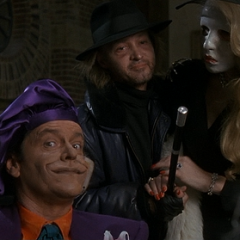
La-La Land Records' HOOK (2CD Expanded) Discussion thread
Brando reacted to Gruesome Son of a Bitch for a topic
Wait to die. Wait to live. Wait for an OST that would never come.1 point -

What is your number one wish for JW's Indiana Jones 5 score?
Jurassic Shark reacted to Biodome for a topic
Or William Ross0 points

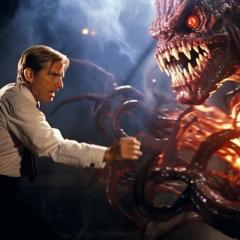
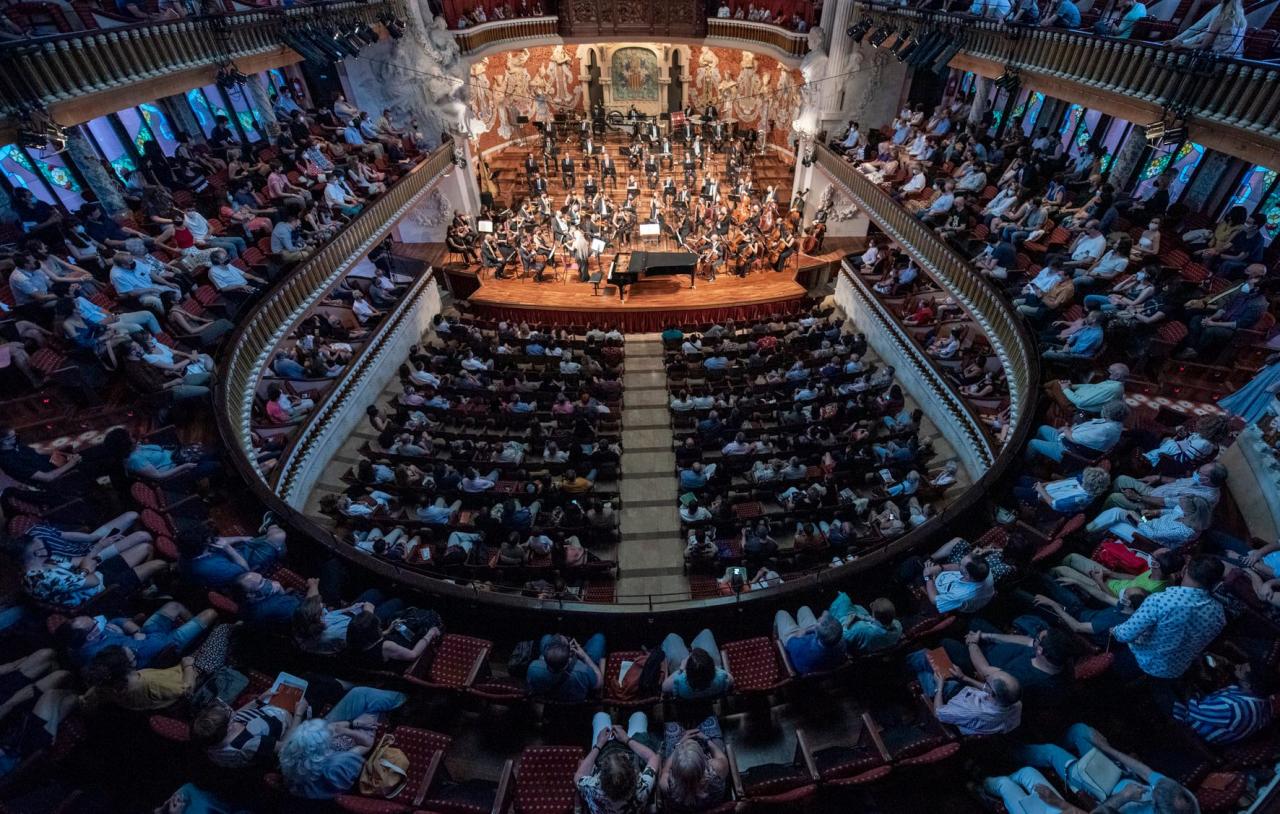
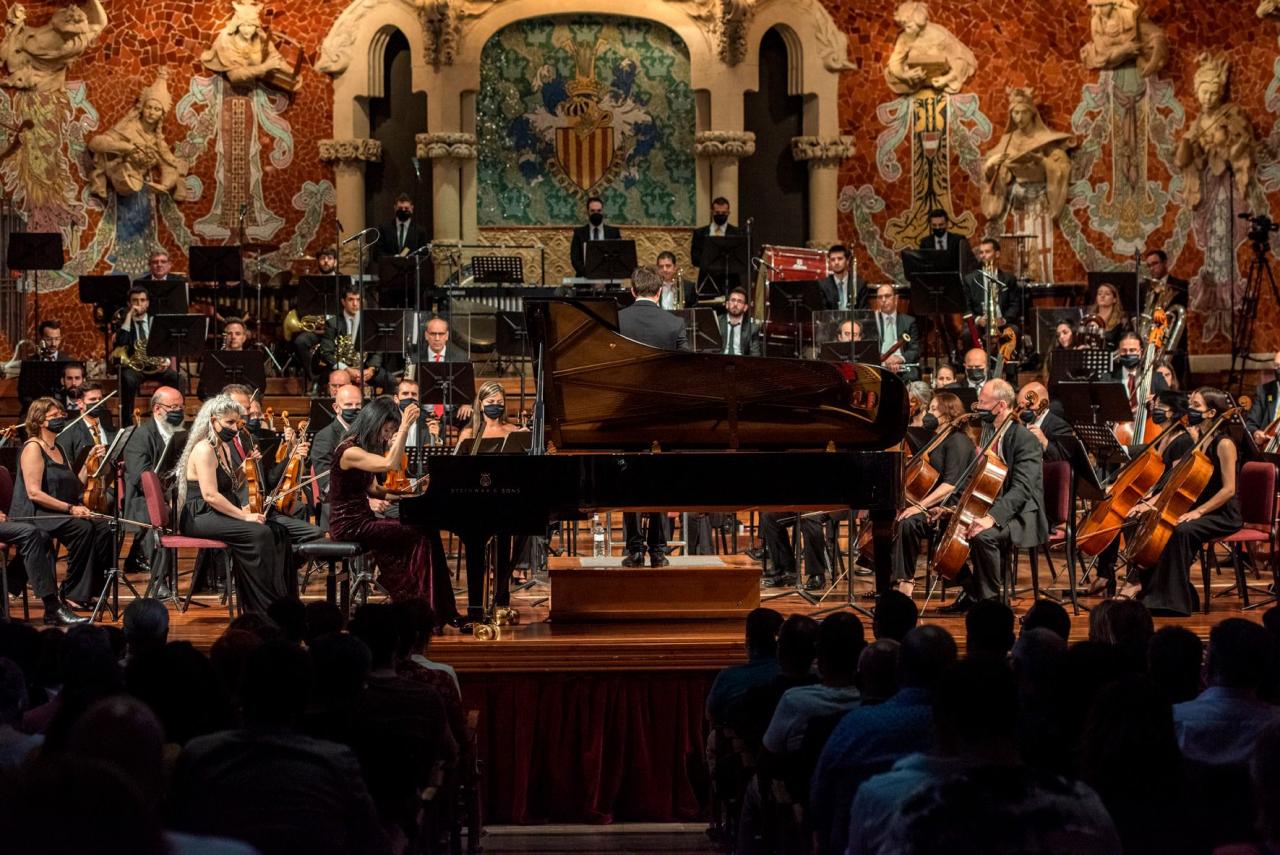


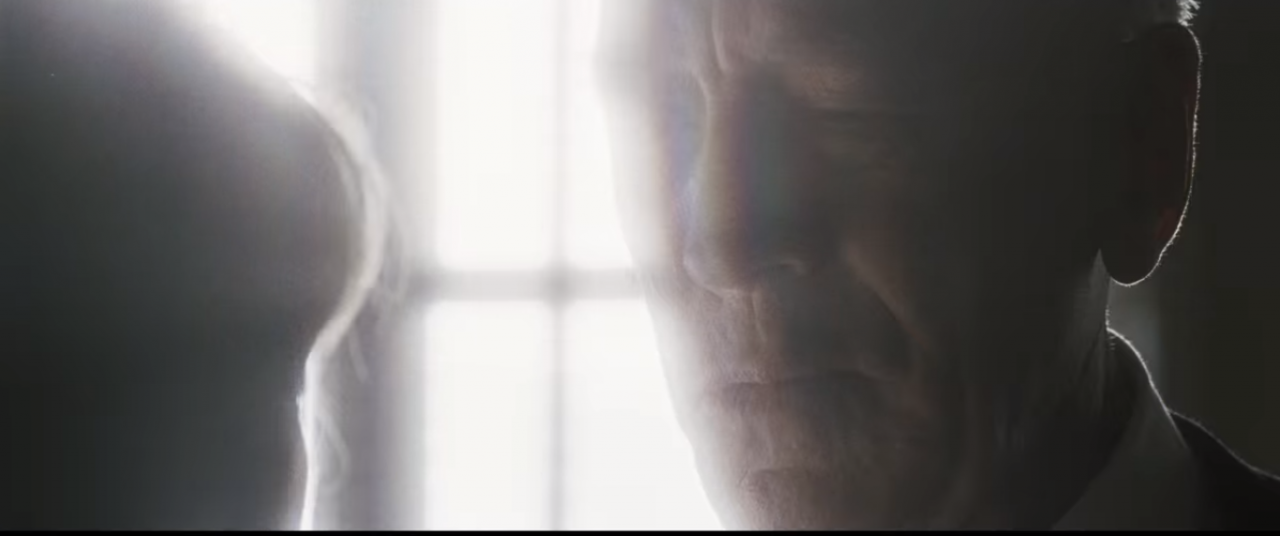
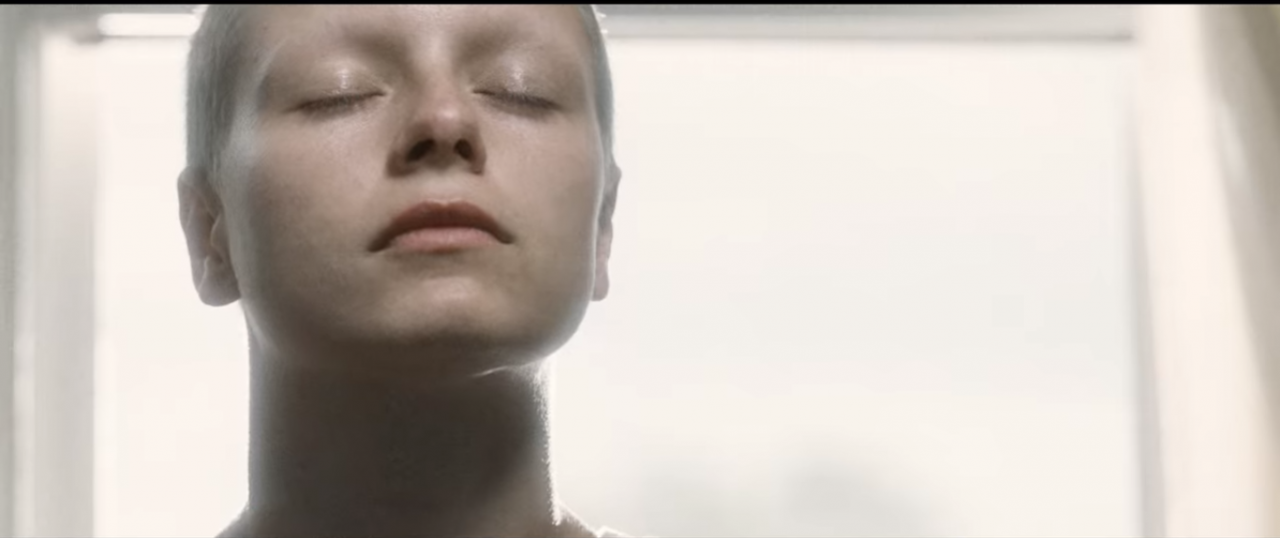
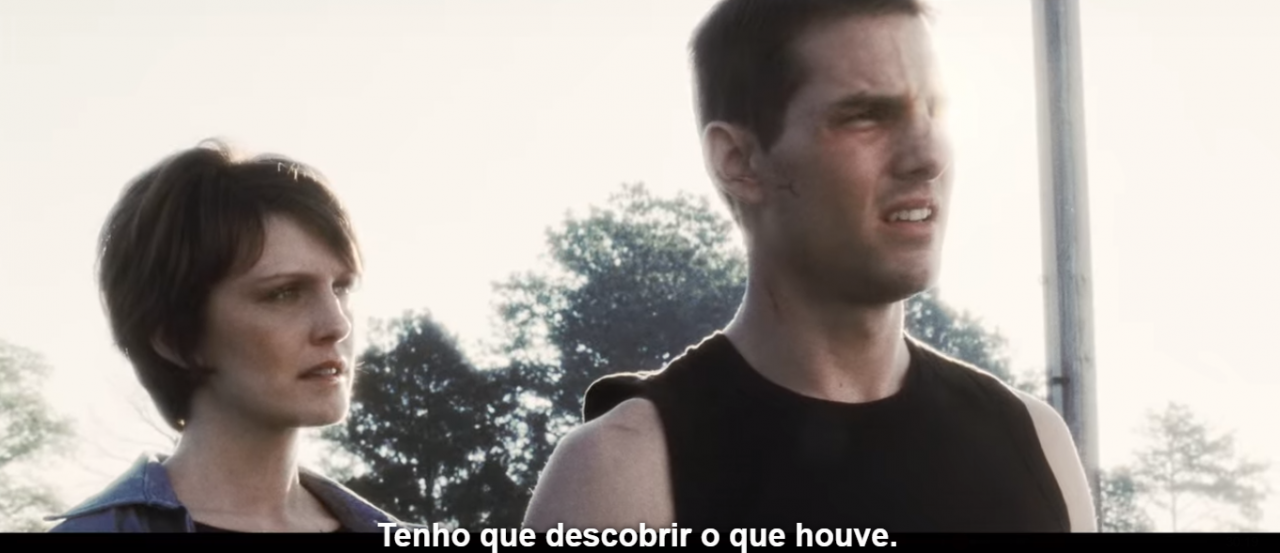
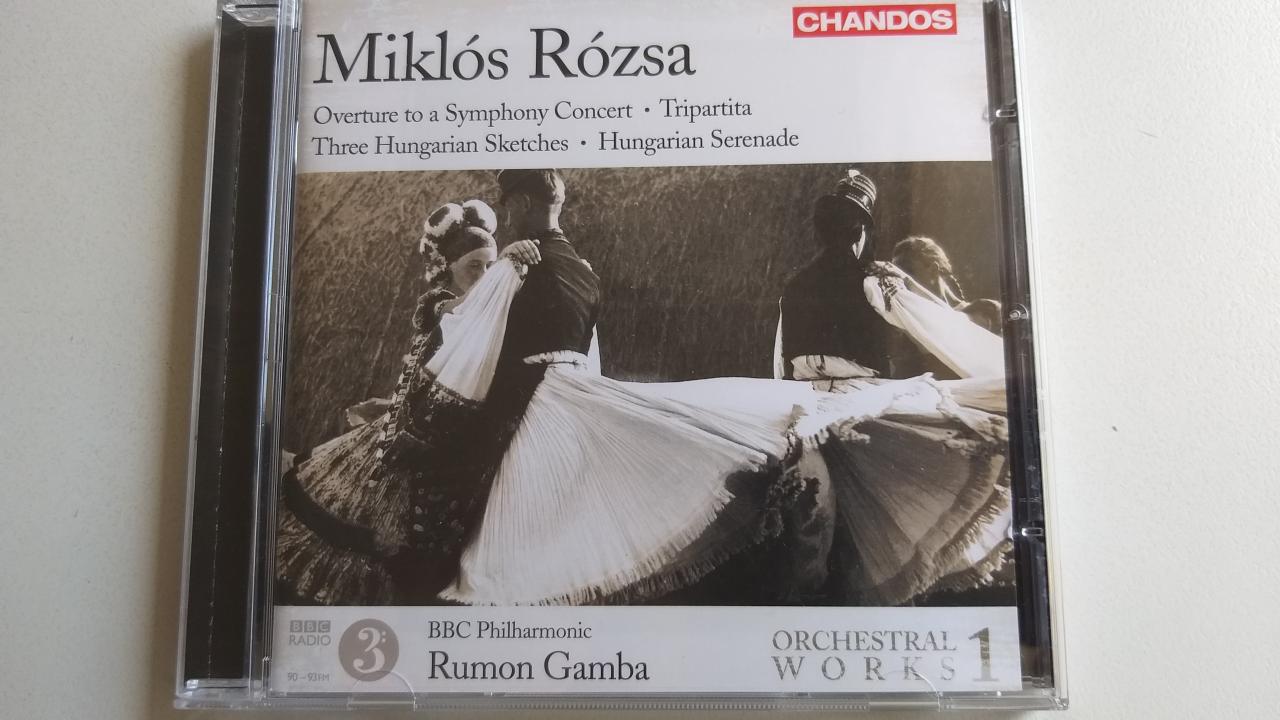

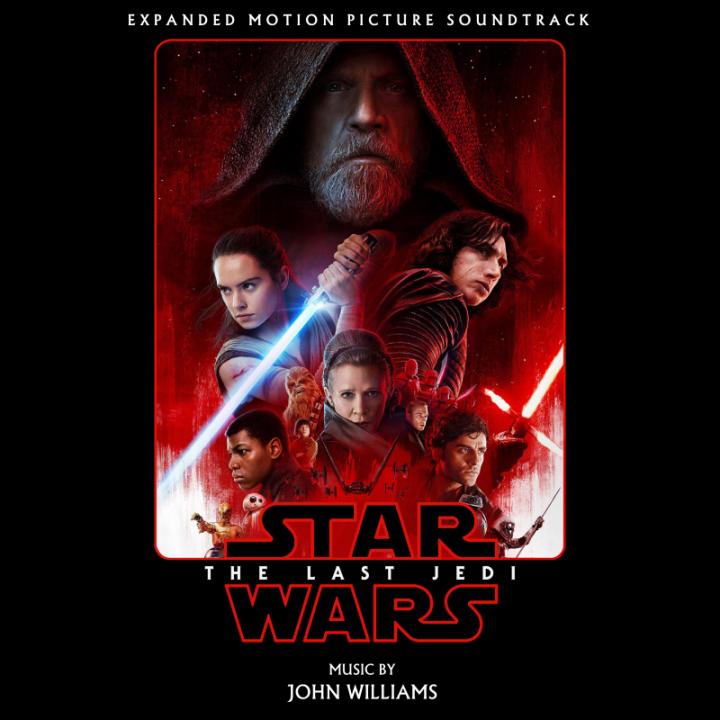
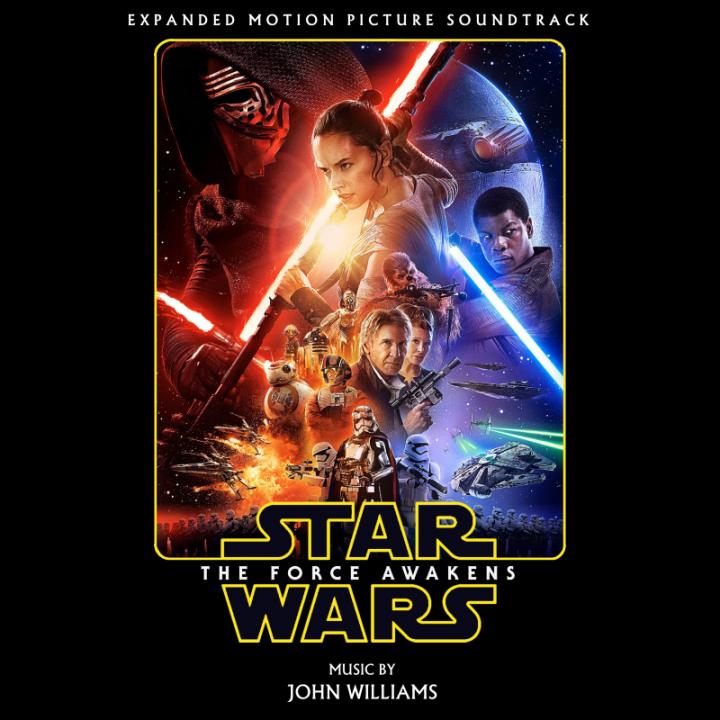
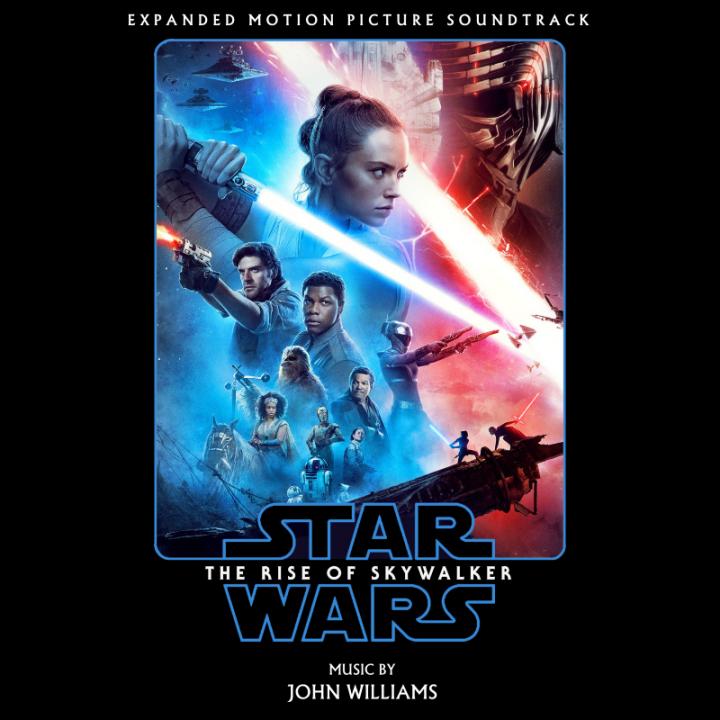

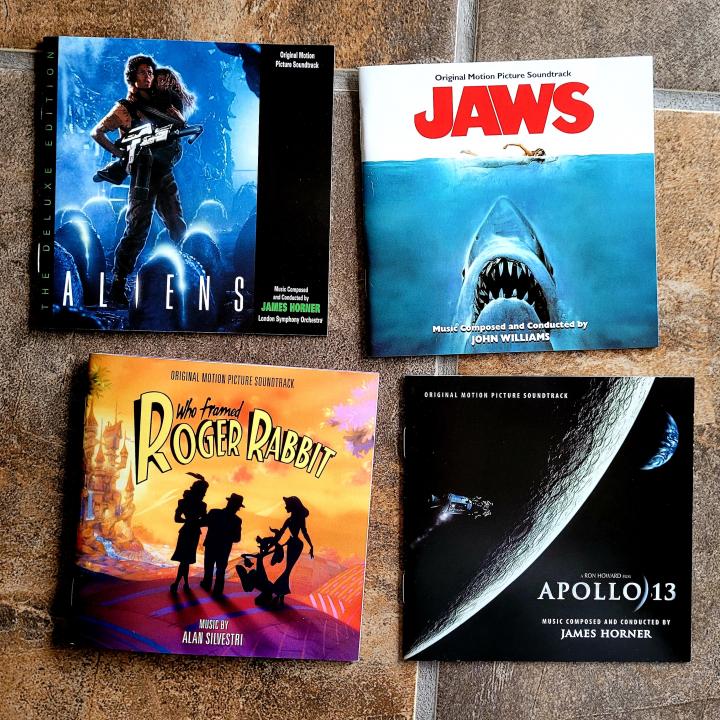
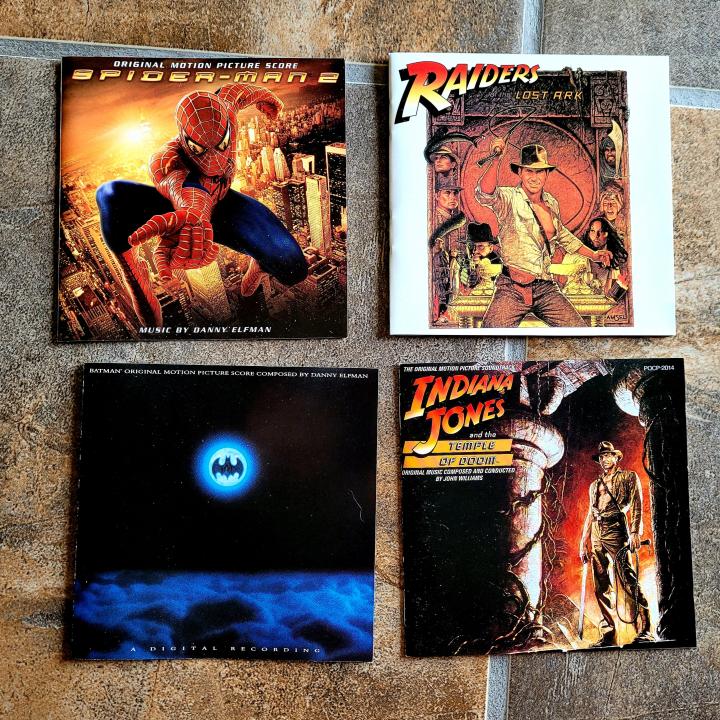
.thumb.jpg.75d0bef92fd5d333326cad21f3788748.jpg)
